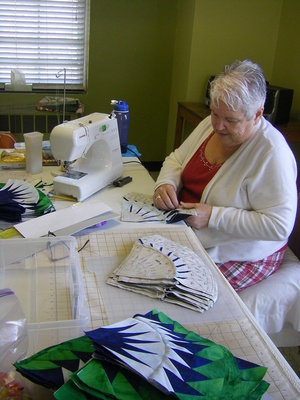 Benedictine abbeys are places where the culture of prayer, study, charitable work and arts and crafts can breathe with ease. That’s the genius of Saint Benedict and the leadership of monasticism through 1500 years. Few religious orders have such an expansive sense of culture as the Benedictines (or share in across the world). Art aids one in his or seeking God and a better sense of self.
Benedictine abbeys are places where the culture of prayer, study, charitable work and arts and crafts can breathe with ease. That’s the genius of Saint Benedict and the leadership of monasticism through 1500 years. Few religious orders have such an expansive sense of culture as the Benedictines (or share in across the world). Art aids one in his or seeking God and a better sense of self.
The monks of Saint Benedict’s Abbey, a monastery of monks in the Swiss-American tradition just outside Milwaukee and an hour’s drive from O’Hare Airport, have a retreat house where individuals and groups come to pray, study and rest in the Lord.
The arts have had a significant, yet humble place in Benedictine life. Making art is one way to bring together a deeper level of fraternity, balance and healing in the distracted world. Some Benedictines are musicians, others are scholars, weavers, quilters, calligraphers gardeners, beer makers, vestment makers, organists and horn players, others are apiarists and the so on. In his Rule for Monasteries, Saint Benedict’s 57th chapter “On the Artisans of the Monastery” fosters a spirit of human expression that has limits based on virtue as yet another but crucial way to glorify God. Benedict says,
If there are artisans in the monastery,let them practice their crafts with all humility, provided the Abbot has given permission. But it any one of them becomes conceited over his skill in his craft, because he seems to be conferring a benefit on the monastery, let him be taken from his craft and no longer exercise it unless, after he has humbled himself, the Abbot again gives him permission.If any of the work of the craftsmen is to be sold, those responsible for the sale must not dare to practice any fraud. Let them always remember Ananias and Saphira, who incurred bodily death (Acts 5:1-11), lest they and all who perpetuate fraud in the monastery affairs suffer spiritual death. And in the prices let not the sin of avarice creep in, but let the goods always be sold by people in the world, “that in all things God may be glorified” (1 Peter 4:11).

While Chapter 57 of the Rule doesn’t explain why Saint Benedict’s Abbey welcomes three times a year some local ladies who quilt, but it does show the fundamental openness to the other and art found in Benedictine culture. These women probably have no idea that Benedictines have a long tradition of artistic work but they appreciate the hospitality. Abbot Leo, the director of the retreat center provides the space for the ladies to bring their equipment who for several hours a day work together on their projects. As a group of friends they support each other in work and life; newcomers are welcome!
The quilts are not for sale; they are private works given as gifts to friends and family. I find the idea of providing space for the quilters to be supremely wonderful because while the monks are not directly involved in the artisans’ work of quilting, they vicariously support a human expression of a deeper reality of the soul.
Not all the quilting women are Catholic, but most are, even the one who claims to be a non-practicing, related her positive experience of faith and art. We all spoke about the nuns we had in school, the importance of faith and even one lady spoke about her decision to be Catholic.
More pictures of Saint Benedict’s Abbey can be found here.


